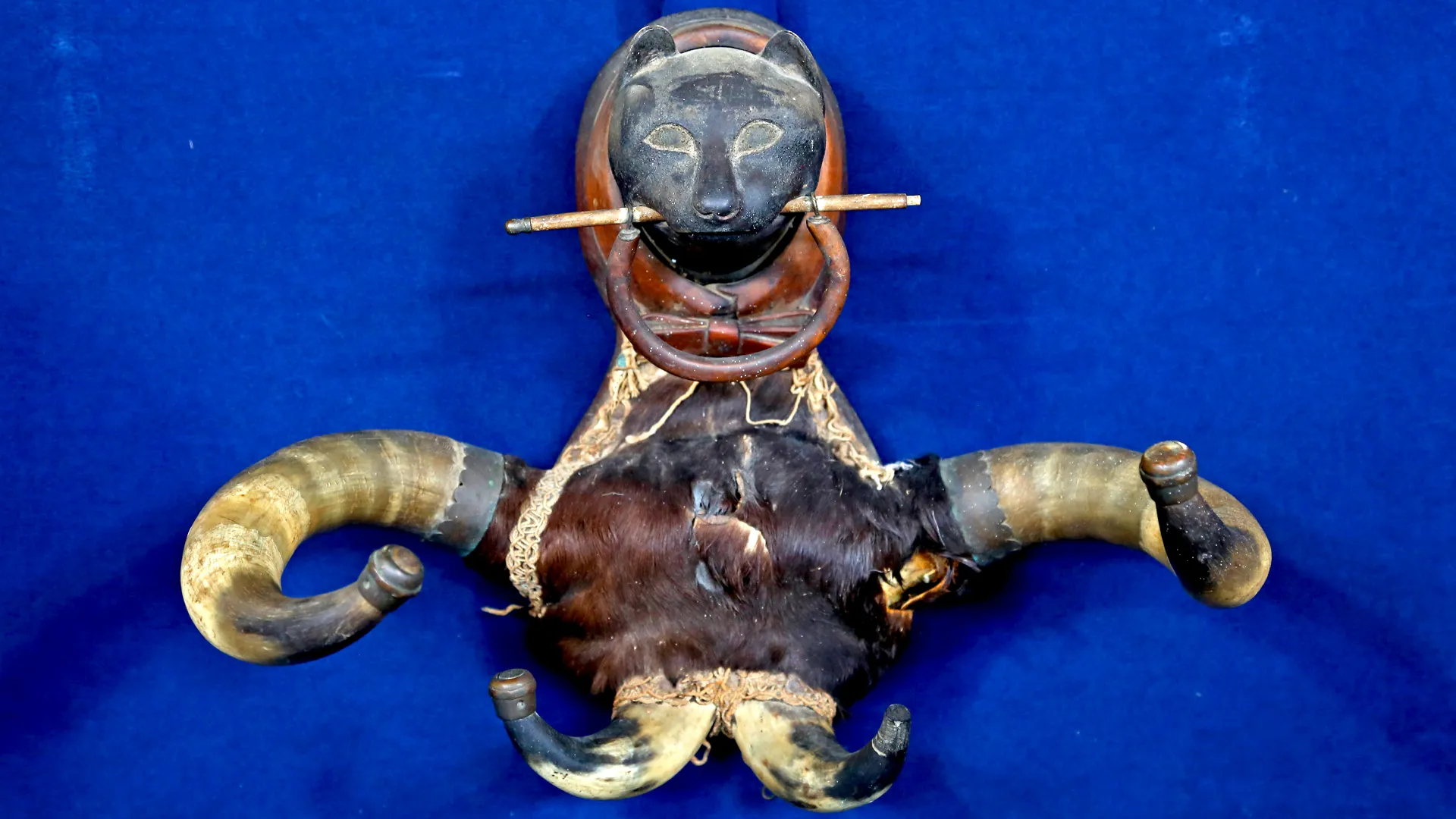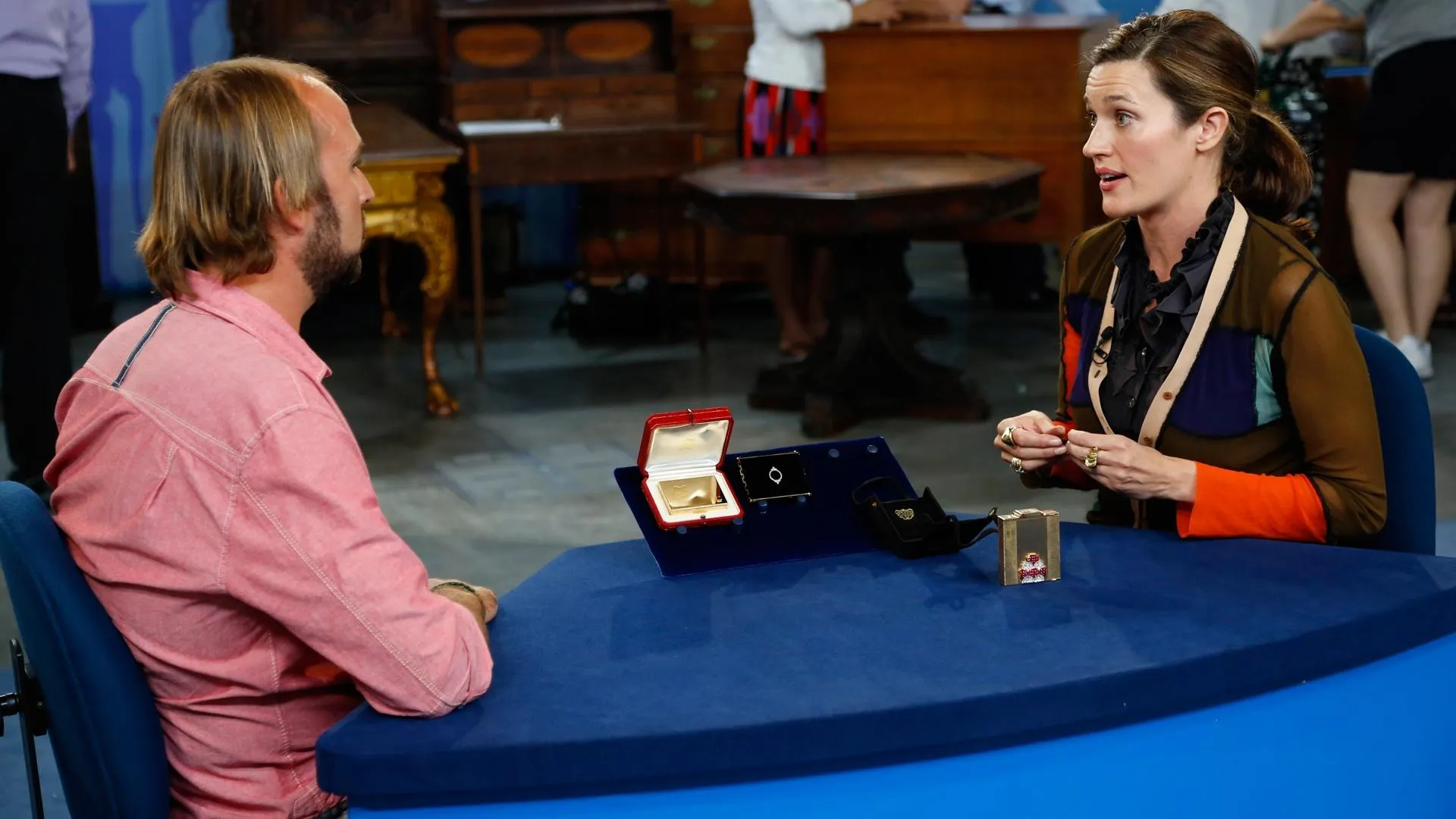GUEST: This is the beginnings of my collection. A lot of people call it hoarding. But over the years I think I've started to prove them wrong. I'm a Richmond local native. I'm not a come-here, so I know all the places to go to find unusual weirdness. Well, I was at the Bellwood Flea Market, right up the street, just gotten out of college.
APPRAISER: So give me a year.
GUEST: Probably 1974.
APPRAISER: Okay.
GUEST: A long time ago. I was walking down the aisle and this thing caught my eye, and I said, "What in the heck could this be?" I gave the guy, I think, $20-$25 for it, and then I took it home. And I put it on the dining room table, which was greatly frowned on in the early years by my family and my wife and everybody. So it made its way up into the attic. Then I put it in a place of prominence where I could watch it. Don't look in the eyes until we find out what it is. Don't look in those eyes, okay? But I think it might be some Louisiana Voodoo stuff. It served its purpose, so everybody knows that I'm a collector, not a hoarder. You know?
APPRAISER: Okay, that's great.
GUEST: And that's the one thing it's done for me.
APPRAISER: I think the piece is wonderful. Folk art is a category that has material that's very serious, that's very historic. And I love the category of folk art because it's very inclusive. So it finds a place for all these orphan pieces, where there's no body of work, we have no idea who made this. And a person like you finds the piece, and over the years kind of a storyline is created about the particular piece.
GUEST: It's part of my loose screw.
APPRAISER: And you say it's a Voodoo piece. It's really a well-made and well-proportioned hat rack.
GUEST: I have horn hat racks at home, but I never thought it would be a hat rack. I just went right over it.
APPRAISER: You just went past it because of this almost mountain lion figure that's carved there. That is all-original varnished surface, and it's all grimy and gritty, and it's like the day you found it.
GUEST: And now you can look in the eyes.
APPRAISER: And now you can look in the eyes.
GUEST: So other than a hat rack, it's whatever you want it to be.
APPRAISER: It's whatever you want it to be. And that's what's wonderful about folk art. It dates late 19th into the early 20th century. It's horned, it's beautifully made. It had metal tips on the edges of the horn. And one is missing over here. And you can see there is condition issues with this cowhide. But it's all about the macro here. It's about the total picture. We value it in its entirety. So the top section is carved wood. Probably a pine or a maple. And the carving is extraordinary, including this wonderful looped bowtie.
GUEST: I think it's cherry wood.
APPRAISER: It could be cherry wood. This is a type of piece that could have been made probably in the Midwest, probably in the South. It's always difficult to date and to tell exactly where a piece like this was made, other than saying, certifiably, it's American. I would put a retail value on it of $3,000 to $4,000.
GUEST: Almost 25% of a college tuition. Can we get it up some? (chuckles) It was a good pick.
APPRAISER: It was a great pick.











